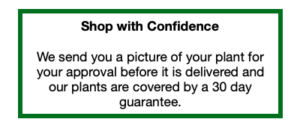General Landscape Uses: An excellent specimen or accent shrub in open coastal areas or directly on beach dunes.
Ecological Restoration Notes: A somewhat rare element of beach dunes and coastal strand. Probably rarer now than historically due to coastal development and erosion. Massive numbers of plants may recruit following storms if seed sources are present.
Description: Medium shrub forming a large roundish mound. Leaves slender, thick, hairy, grayish, about 1 1/2-4 1/2 inches long.
Dimensions: Typically 3-6 feet in height. As broad as tall or broader.
Growth Rate: Moderate to slow when older, but can grow fast when young.
Range: Monroe County Keys north along the east coast to Brevard County; Bermuda, West Indies, southern Mexico and Central America.
Habitats: Beach dunes and coastal thickets.
Soils: Moist, well-drained, sandy or limestone soils, without humus.
Nutritional Requirements: Low; it grows in nutrient poor soils.
Salt Water Tolerance: Low; does not tolerate long-term flooding by salt or brackish water.
Salt Wind Tolerance: Frontline; grows in direct salt wind but away from constant salt spray.
Drought Tolerance: High; does not require any supplemental water once established.
Light Requirements: Full sun.
Flower Color: White turning lavender.
Flower Characteristics: Semi-showy one-sided curled spikes.
Flowering Season: All year; peak winter-peak.
Fruit: Black or brown drupe enclosed in a corky head about 1/4″ long. All year. The corky fruits allow for wide dispersal by water.
Wildlife and Ecology: Nectar plant for Miami blue (Cyclargus thomasi bethunebakeri) and other butterflies.
Horticultural Notes: Can be grown from seeds, cuttings and ground layers. Seeds sprout well but will be attacked by fungi if kept too wet. Growth at first is rapid.
Comments: A beautiful shrub for oceanfront gardens, but susceptible to diseases inland. It is listed as endangered by the state of Florida. Horticultural synonyms: Heliotropium gnaphalodes.










Alexander Florence –
I’ve had such a hard time getting my hands on sea lavender but you delivered two right to my front door.